Ive made a simple ticker module that produces a rick every time the counter reaches 163. Here is the code for it:
module baud_gen(
input clock,
input reset,
output tick
);
reg [7:0] count;
always @ (posedge clock)
begin
if(reset || (count == 163))
count <= 0;
else
count <= count + 1;
end
assign tick = (count == 163) ? 1:0;
endmodule
It works as it should, in simulation when the counter reaches 163, tick is assigned high and otherwise its 0.
Now I instantiated this into my UART receiver. Here is the code snippet:
module receiver(
input clock,
input reset,
input s_tick,
input rx,
output reg done,
output [7:0] word_out
);
localparam [1:0]
idle = 00,
start = 01,
data = 10,
stop = 11;
baud_gen ticker (.clock(clock), .reset(reset), .tick(s_tick));
.
.
.
.
Now when I run the simulation for the receiver module. The ticker does not work correctly. Here instead of producing a 1 at count==163 it produces a x.
Here is the simulation of it when it has been instantiated into receiver module:

I cannot figure out why this change in behavior. Thank you for looking